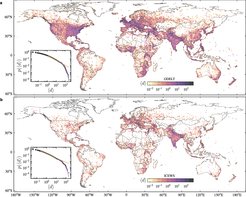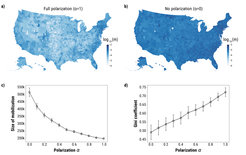Digital Mobilization Group
Sample Project: Small World of Protests
Sample Project: Social Mobilization for COVID
How has digital technology advanced crowdsourced social mobilization?
The advancement of digital technologies has intensified social communications and stimulated the emergence of voluntary and crowdsourced, real-world mobilization. Social mobilization has been emerging not only in eruptions of large-scale social movements, e.g. protests and campaigns, but also used for crowdsourced problem-solving, e.g. evacuation from natural disasters and containing pandemics. Therefore, understanding the potential as well as the limits of social mobilization can open new ways to respond to challenging social issues. Our main questions are:
- How have digital technologies mediated social mobilization?
- How can crowdsourcing and digital mobilization solve social problems?
- What would be the trade-offs and unexpected effects of social mobilization?
We use network science and large-scale data sets to analyze, understand, and predict social mobilization in the digital era.
Protest diffusion is a typical yet very complex, rapidly evolving, and unpredictable type of social mobilization occurring at the largest scale. While protests were observed to spread over different regions across the borders of countries, the shape and the reach of global protest diffusion have not been clearly understood.
Sample Project: Small World of Protests
The networks of global protests present a small-world effect, indicating that protests can quickly diffuse from one region to any part of the globe.
Ferreira et al. (2021) found that protest occurrences were globally connected as a “small world,” using two large-scale data sets of global conflicts from GDELT and ICEWS. The phenomenon means that a protest in one region can diffuse to any other region, globally and almost immediately. Furthermore, the steps necessary to reach the other region have decreased by year, suggesting that the world is becoming “smaller”—thus, global protest diffusion is getting easier. With this small-world effect, the number of protests and their global co-occurrences has increased significantly since 2005. This increase indicates that the emergence of social media platforms and the rise of mobile internet access play an important role in protest diffusion by enabling the easy and quick spread of information.

Figure 1. The average number of days with protests by year for each region in the GDELT (1979–2020) data set. The color scale is logarithmic. The inner plots show the probability distribution of the protest days also in a logarithmic scale. The orange and purple lines correspond to power-law and exponential fittings respectively.
Image: MPI for Human Development
Adapted from Ferreira, Hong, Rutherford, & Cebrian (2021)
Original image licensed under CC BY 4.0
Sample Project: Social Mobilization for COVID
The polarized mobilization model captures the impedance of mobilization by political polarization, illustrating the success rate lowered three times by polarization in a hypothetical compliance campaign against COVID.
While social mobilization provides an understanding of conflict diffusion, the unprecedented crisis induced by the COVID-19 pandemic in the past 3 years questioned the practical use of social mobilization. Can we use social mobilization to fight the pandemic?
Hong et al. (2021) examined the possibility of using social mobilization for a compliance campaign to mitigate COVID-19 spread. To reproduce diverging acceptance by individuals’ political affiliations, the authors simulated the campaign as individuals less likely to mobilize their friends with the opposite political orientation on a friendship network constructed from Facebook data and the US political landscape. As a result, the campaign’s success rate was more than three times higher in identically polarized states than in oppositely polarized states. This observation shows not only the potential of social mobilization as a collective mechanism for pandemic control, but also its sensitivity to political polarization. It emphasizes efforts to bypass and alleviate political polarization for effective mitigation, for example, by seeding sponsors or proponents of the campaign in oppositely oriented places.

Figure 2. The number of mobilized people per capita of each county in the simulations for full polarization (left) and no polarization (right).
Image: MPI for Human Development
Adapted from Hong, Rutherford, & Cebrian (2021)
Original image licensed under CC BY 4.0
Key References

